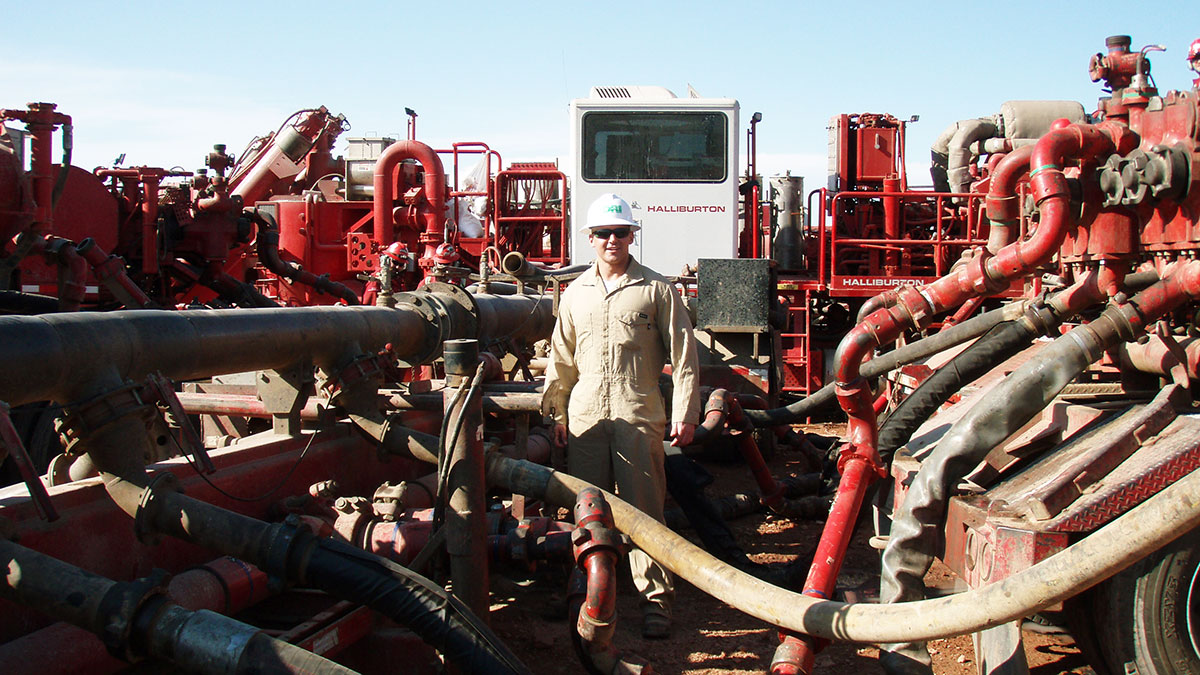Fracking research receives $2 million
 Supplied - Joshua Doubek
Supplied - Joshua DoubekWith natural resources making up a fifth of Canada’s GDP and providing almost 1.8 million jobs, gas production strongly impacts Canadians, Albertans and professors at the University of Alberta.
Assistant professor of Earth and Atmospheric Sciences Daniel Alessi has received $2 million in funding from the government of Canada and Encana to closely study the effects of hydraulic fracturing, or fracking, on water.
This funding adds to $3 million Alessi received as Encana Chair in Water Resources at the U of A for project work.
Fracking, an oil extraction process, involves injecting fresh water mixed with chemicals deep into the ground to break up rock and release crude oil. The water that returns to the surface after injection is mixed with chemicals and can be up to 10 times the salinity of the ocean. This water can be toxic for animals such as zebrafish, Alessi said.
This new funding will cover the hiring of up to 25 graduate and post-graduate students and the maintenance costs of the lab’s state-of-the-art equipment for studying water produced from fracking, Alessi said.
Alessi, along with professor of biology Greg Goss and professor of medicine and pathology Jonathon Martin, analyze flowback samples from Encana’s fracking sites and test inorganic chemistry, organic chemistry and toxicity, respectively. The three researchers are figuring out why some samples are more toxic than others, Alessi said.
“We’ve characterized these fluids better than anyone in the world at this point.” he said. “One thing that we’re doing that nobody else is doing very much of is linking specific chemical phenomena in the fluids, to measure toxicity of these fluids onto aquatic organisms.”
While some environmentalist groups lobby against fracking, other industry groups hope to expand the practice. Alessi believes the answer lies somewhere in the middle.
“It’s easy for people to jet up here to the oil sands and criticize Albertans for extracting that resource,” he said. “But then the question is, ‘What is your carbon footprint and what are you actually doing?’ Are you really willing to live a life style that is petroleum-free, for example and do you know the implications of that?’”
Alessi thinks fracking will be used in the future and that his research will lower water use, increase recycling and mitigate the toxicity of water used in the process.
As a scientist, Alessi views his role in the debate as providing accurate information without personal opinion. He has spent years working on this issue and thinking about it carefully and not reactively, he said. Without the new funding from the government of Canada and Encana his team would not be able to study the flowback and its implications as closely, he said.
“Even as an undergraduate you have some years to think about a few problems very carefully and it’s a wonderful thing to be able to try and understand the nuances,” he said.
Fracking wasn’t always Alessi’s focus — as an undergraduate student in 1997, Alessi studied geology at the University of Wisconsin and went on to pursue environmental geochemistry for his MA and PhD. When Alessi met with Encana, he learned fracking was a project he was qualified to pursue at the U of A.
“It could have been hydraulic fracturing, it could have been the oil sands, it could have been something in a different country.” Alessi said, “But it just happens that that was the problem available here and I think it’s a pretty important one right now in terms of water use and water contamination.”





Thousands of new sources of pollution (wellheads, tank batteries + compressor/processing sites) emit steady flows of benzene, carbon tetrachloride, formaldehyde, and acetaldehyde. Carbon disulfide levels can be 1000 times higher than the short term health benchmark. Carbon disulfide levels greatly exceed adult worker short term regulatory and recommended limits.
Reference: TCEQ Interoffice Memo Jan 27, 2010, “Health Effects Review of Barnett Shale Formation Area
Monitoring Projects” and Sadlier & Honeycutt, “TCEQ Barnett Shale Update” 2010
We already know that fracking has contaminated ground water in at least six states. See this summary – https://www.youtube.com/watch?v=8Utn7nUuBTI&feature=youtu.be&a